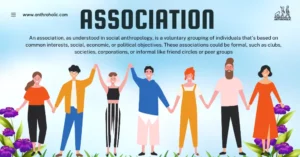AI Answer Evaluation Platform Live Now. Try Free Answer Evaluation Now
Gene Therapy
Gene therapy is a medical field that has shown potential for treating and potentially eradicating genetic disorders and other diseases by altering the genetic makeup of an individual’s cells. This therapeutic approach has its roots in molecular biology and genetics, and it works by introducing, altering, or suppressing specific genes in an individual’s cells to help treat or prevent disease.

Since the concept of gene therapy was first proposed in the 1970s, significant advances have been made, with the first clinical trials occurring in the 1990s. Over the past few decades, gene therapy has evolved from a theoretical concept to a practical solution for diseases once deemed untreatable. Techniques have varied from ex vivo gene therapy, where genes are modified outside the body and then transplanted back in, to in vivo methods, where genes are modified directly within the body.
However, gene therapy is not without its controversies and ethical dilemmas, ranging from questions of accessibility and equity to concerns about the potential for genetic enhancement. This paper seeks to explore these dimensions from an anthropological perspective.
The Birth of Gene Therapy
Gene therapy as a concept was first proposed in the early 1970s as a revolutionary approach to treating genetic diseases. In their seminal paper published in 1972, Theodore Friedmann and Richard Roblin discussed the potential of using recombinant DNA to replace or augment dysfunctional genes, marking the dawn of gene therapy [1].
The concept, however, remained largely theoretical until the late 1980s when technological advances allowed for practical exploration of gene therapy. A major milestone was the creation of a genetically engineered mouse in 1980, demonstrating for the first time that genes could be intentionally altered in a mammal [2].
A pivotal moment in gene therapy came in 1990 when the first FDA-approved human gene therapy trial was conducted by a team led by Dr. R. Michael Blaese at the National Institutes of Health. The trial involved a four-year-old girl suffering from adenosine deaminase deficiency (ADA-SCID), a severe immune disorder. The therapy involved extracting white blood cells from the patient, inserting a healthy ADA gene into these cells using a retrovirus, and then infusing the genetically modified cells back into the patient. The procedure represented the first demonstration that gene therapy could be used to treat genetic diseases in humans [3].
Since these early milestones, the field of gene therapy has continued to develop, witnessing numerous advancements and innovations, evolving in response to both scientific progress and ethical, legal, and societal considerations.
Evolution of Techniques
As the field of gene therapy progressed, so too did the techniques used for gene delivery. Initial methods relied on retroviruses, which could integrate their genetic material into the host’s genome. While this allowed for permanent modification of the target cells, the random insertion of genes raised significant concerns due to the risk of insertional mutagenesis, which could lead to cancer.
The limitations of retroviruses led to the use of adenoviruses as gene delivery vehicles. Adenoviruses possess the ability to carry larger gene sequences and, unlike retroviruses, do not integrate their DNA into the host genome, thereby reducing the risk of insertional mutagenesis. However, the use of adenoviruses often triggered strong immune responses, reducing their overall effectiveness.
Following this, adeno-associated viruses (AAVs) emerged as a more suitable vector for gene therapy due to their ability to provide long-term gene expression with minimal risk of integration into the genome. Additionally, AAVs invoked a lesser immune response compared to other vectors, making them a promising option for therapeutic use.
In the 21st century, the field saw a major breakthrough with the discovery and implementation of Clustered Regularly Interspaced Short Palindromic Repeats (CRISPR) and CRISPR-associated protein 9 (Cas9) system for gene editing. The CRISPR-Cas9 system, discovered by Jennifer Doudna and Emmanuelle Charpentier, offers targeted modification of an organism’s DNA, allowing for unprecedented precision in gene therapy applications [4].
The evolution of gene therapy techniques underscores the ongoing progress in this field, with each new development opening up novel opportunities for treating a wide array of genetic disorders.
Perceptions Across Diverse Cultures
Gene therapy’s acceptance and perception significantly vary across different cultures. This variation can be attributed to factors such as cultural beliefs, historical experiences, social norms, and the level of public understanding of science and technology. For instance, in a study conducted in 2000, Japanese respondents demonstrated more apprehension towards gene therapy compared to their European and American counterparts, potentially due to cultural beliefs and historical experiences related to genetic modifications.
Religion, Beliefs, and Gene Therapy
Religion plays a crucial role in shaping perceptions about gene therapy. Many religious traditions express concerns about the ethical implications of genetic manipulation, often reflecting on the concept of ‘playing God’. In a study exploring Islamic perspectives on gene therapy, it was found that while there was general acceptance for somatic gene therapy (therapy that affects only the individual), germline gene therapy (therapy that could affect descendants of the individual) was viewed with more reservations due to concerns about altering creation.
The Catholic Church has also provided guidelines regarding gene therapy, supporting therapeutic interventions that respect the dignity and integrity of the person but opposing procedures that could lead to human enhancement.
Gene Therapy in Folk Medicine and Traditional Healing Practices
The integration of gene therapy into traditional healing practices is a complex issue. While there is no direct application of gene therapy in traditional medicine due to the advanced and highly specialized nature of gene manipulation techniques, some parallels can be drawn.
For instance, the concept of correcting or compensating for harmful genetic changes aligns with the traditional medicine approach of restoring balance within the body. However, traditional medicine, unlike gene therapy, relies on holistic and natural methods, often utilizing plants and herbs rather than laboratory-produced vectors for treatment.
Conversely, the use of gene therapy may be seen as a continuation of the historical quest for healing, albeit through contemporary biomedical means.
Gene Therapy and Social Identity
The advent of gene therapy has stimulated debates about its potential impact on social identity. One of the central concerns is how the ability to alter our genes might affect our understanding of identity and individuality. Gene therapy could potentially change certain traits or characteristics, leading to questions about the fluidity of identity and the nature of the self.
Genetic Determinism: Identity and the Self
Genetic determinism, the belief that our genes solely define our traits and behaviors, poses significant implications for identity and the concept of the self. However, most scientists agree that while genes can influence certain characteristics, they don’t dictate our identity, underscoring the role of environmental influences and personal experiences in shaping who we are. Nevertheless, gene therapy’s potential to alter genetic makeup raises complex questions about selfhood and identity in the context of genetic determinism.
Impact on Societal Norms and Stereotypes
The development and application of gene therapy could also impact societal norms and stereotypes. For instance, if gene therapy can modify or ‘correct’ certain traits deemed undesirable, it might inadvertently reinforce stereotypes or societal norms about what is considered ‘normal’ or ‘acceptable.’ This, in turn, could exacerbate societal pressures to conform to particular norms and ideals.
The Question of Human Diversity
Finally, gene therapy presents an important question about human diversity. If gene therapy can be used to eliminate or modify certain genetic traits, this could lead to a reduction in human genetic diversity. This homogenization might have unforeseen consequences, such as reducing our collective resilience to diseases. Furthermore, it could also affect the cultural and social diversity that arises from our genetic differences.
Case Study-1 Successful Implementations
One of the landmark successes of gene therapy is the treatment of Severe Combined Immunodeficiency (SCID), also known as ‘bubble boy’ disease. The most widely reported case is that of a young boy in France with X-linked SCID who underwent successful gene therapy in 2000. After the treatment, the boy’s immune system showed substantial improvement, enabling him to lead a near-normal life.
Another successful instance of gene therapy is the treatment of Leber’s Congenital Amaurosis, a form of inherited blindness. In a 2008 study, three patients with this condition received gene therapy and demonstrated notable improvements in their vision.
Case Study-2 Controversial Cases and Outcomes
Despite its potential, gene therapy has also been associated with controversial cases. Perhaps the most well-known is the death of Jesse Gelsinger in 1999, a young man suffering from ornithine transcarbamylase deficiency, a rare metabolic disorder. He died during a gene therapy trial due to a severe immune response, leading to a major setback in gene therapy research and highlighting the risks involved.
Another controversy emerged in 2019 with the announcement of the birth of the first genetically edited babies in China, using CRISPR technology. The scientist responsible, He Jiankui, faced international condemnation for his experiment, which was deemed unethical due to concerns about consent, transparency, and potential long-term effects of the gene editing.
Advances in Research and Technology
The field of gene therapy has been witnessing rapid advancements in recent years. Key to these advancements is the development of precise gene editing technologies, such as the CRISPR-Cas9 system. CRISPR-Cas9 has transformed the field with its ability to make precise, targeted changes to the genome, thus opening up new possibilities for the treatment of genetic diseases.
Other promising technologies include next-generation vectors for gene delivery, such as lentiviruses and nanoparticle-based systems, which offer improved safety and efficiency profiles.
Progress is also being made in the development of ‘gene drives’—a technique used to promote the inheritance of a particular gene to increase its prevalence in a population. This method could be used to control or eliminate disease-carrying insects or invasive species, although ethical and ecological considerations need to be addressed.
Shaping Future Societies
The advances in gene therapy and genetic engineering technologies hold significant potential for shaping future societies. They may enable the treatment and possibly eradication of a wide range of genetic diseases, improving the quality of life and lifespan for many people.
However, these advances could also lead to complex social, ethical, and legal challenges. If gene editing technologies become widely available and affordable, they might be used for non-therapeutic ‘enhancements’ such as modifying physical or cognitive traits. This could potentially lead to social inequities, with genetically enhanced individuals having advantages over those who are ‘naturally’ conceived.
Furthermore, if germline gene editing (which allows genetic changes to be passed onto future generations) becomes commonplace, it could alter human evolution and biodiversity in unpredictable ways.
In sum, while gene therapy holds great promise, it also raises profound questions about the kind of society we want to create and the ethical boundaries we should establish.
References
[1] Friedmann, T., & Roblin, R. (1972). Gene therapy for human genetic disease? Science, 175(4025), 949-955.
[2] Gordon, J. W., Scangos, G. A., Plotkin, D. J., Barbosa, J. A., & Ruddle, F. H. (1980). Genetic transformation of mouse embryos by microinjection of purified DNA. Proceedings of the National Academy of Sciences, 77(12), 7380-7384. https://pubmed.ncbi.nlm.nih.gov/6261253/
[3] Blaese, R. M., Culver, K. W., Miller, A. D., Carter, C. S., Fleisher, T., Clerici, M., … & Leitman, S. (1995). T lymphocyte-directed gene therapy for ADA-SCID: initial trial results after 4 years. Science, 270(5235), 475-480.
[4] Doudna, J. A., & Charpentier, E. (2014). The new frontier of genome engineering with CRISPR-Cas9. Science, 346(6213), 1258096.




